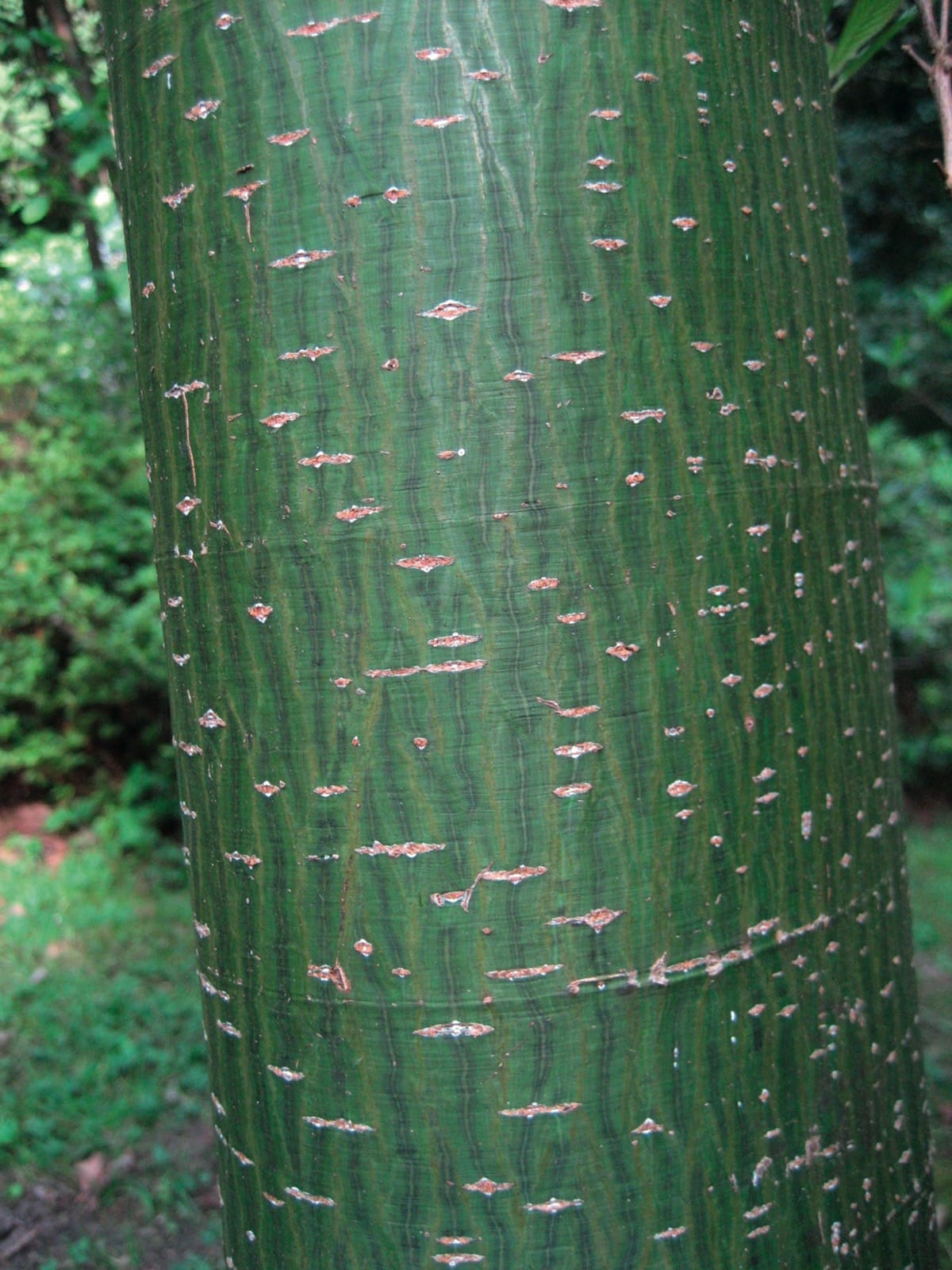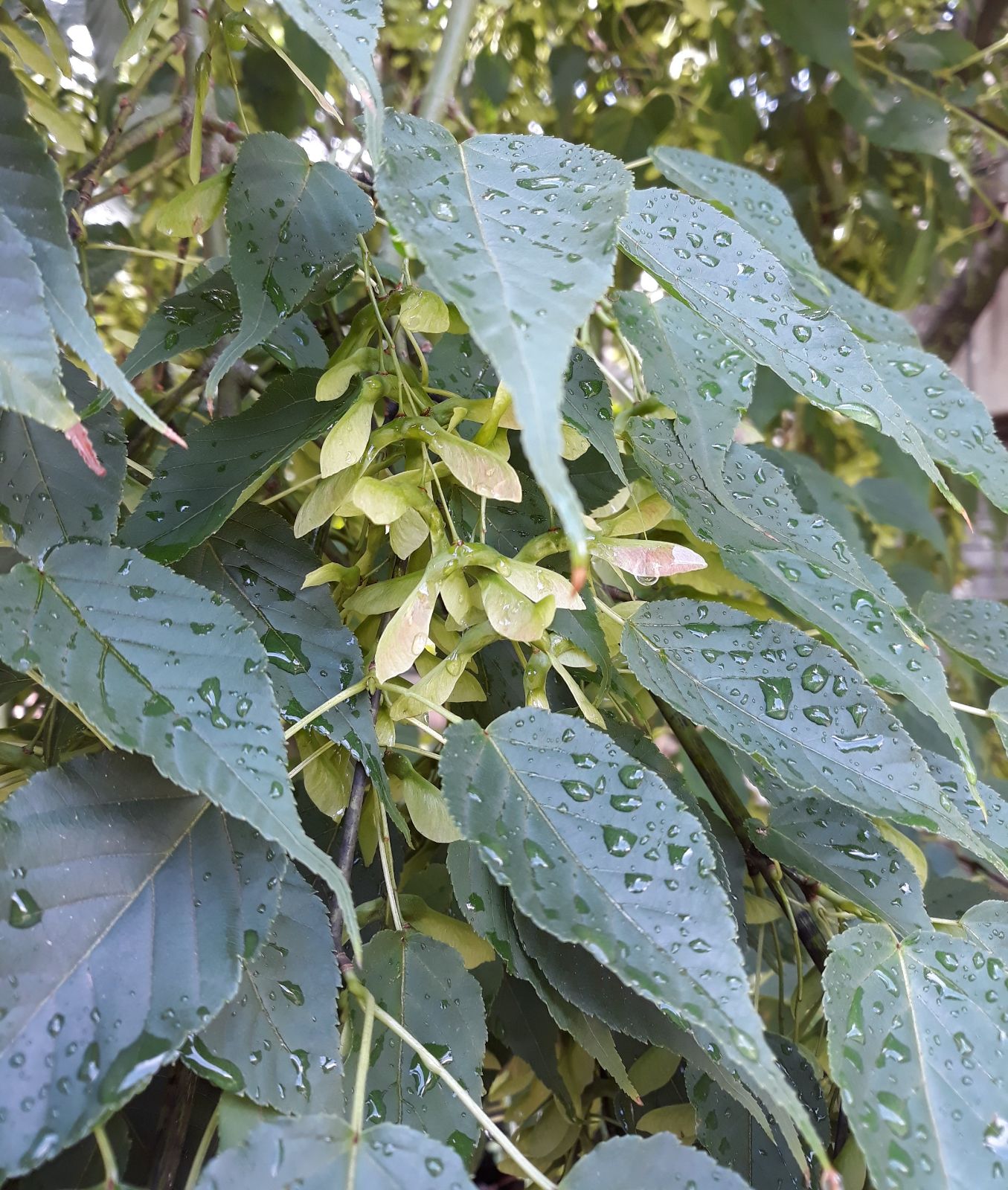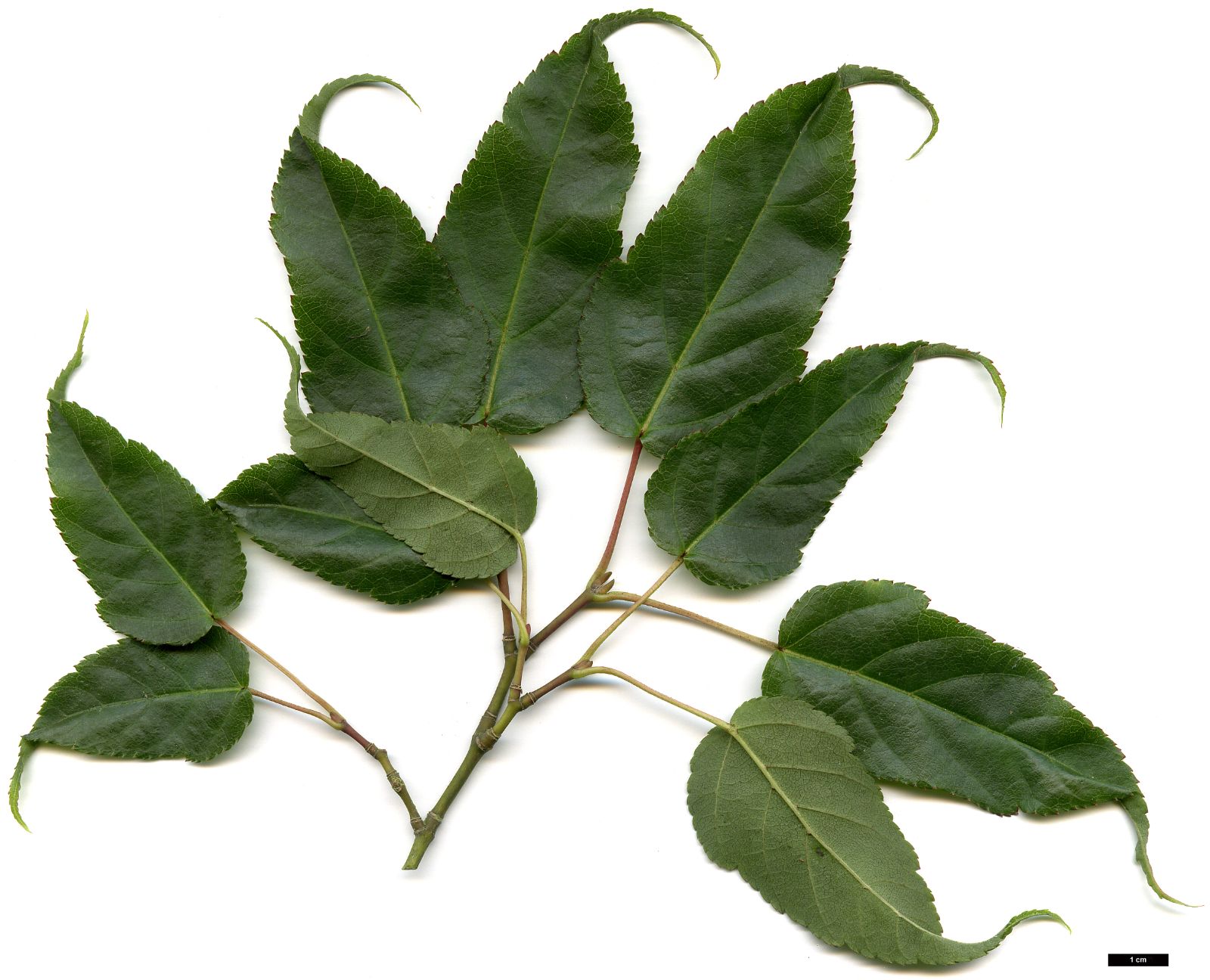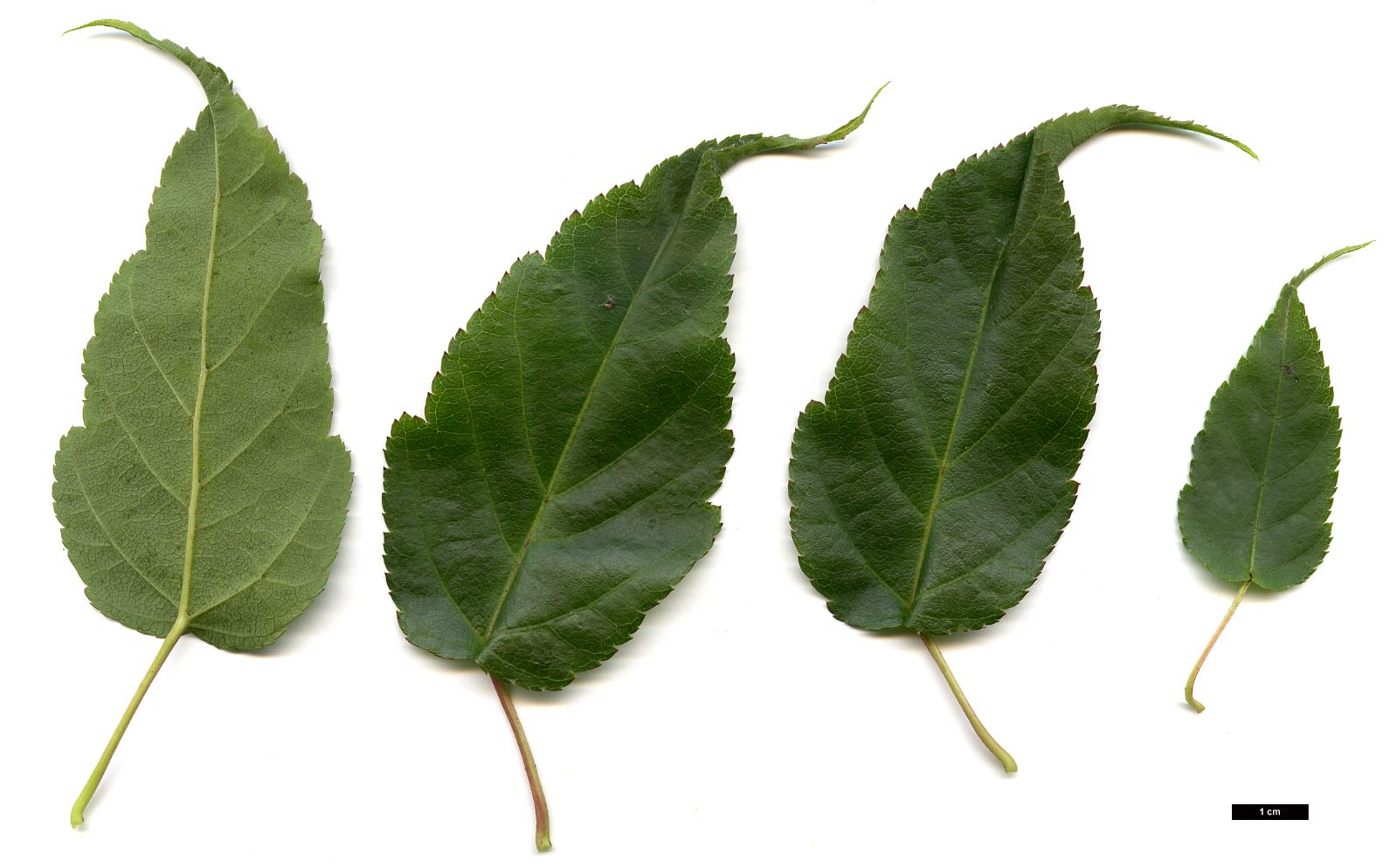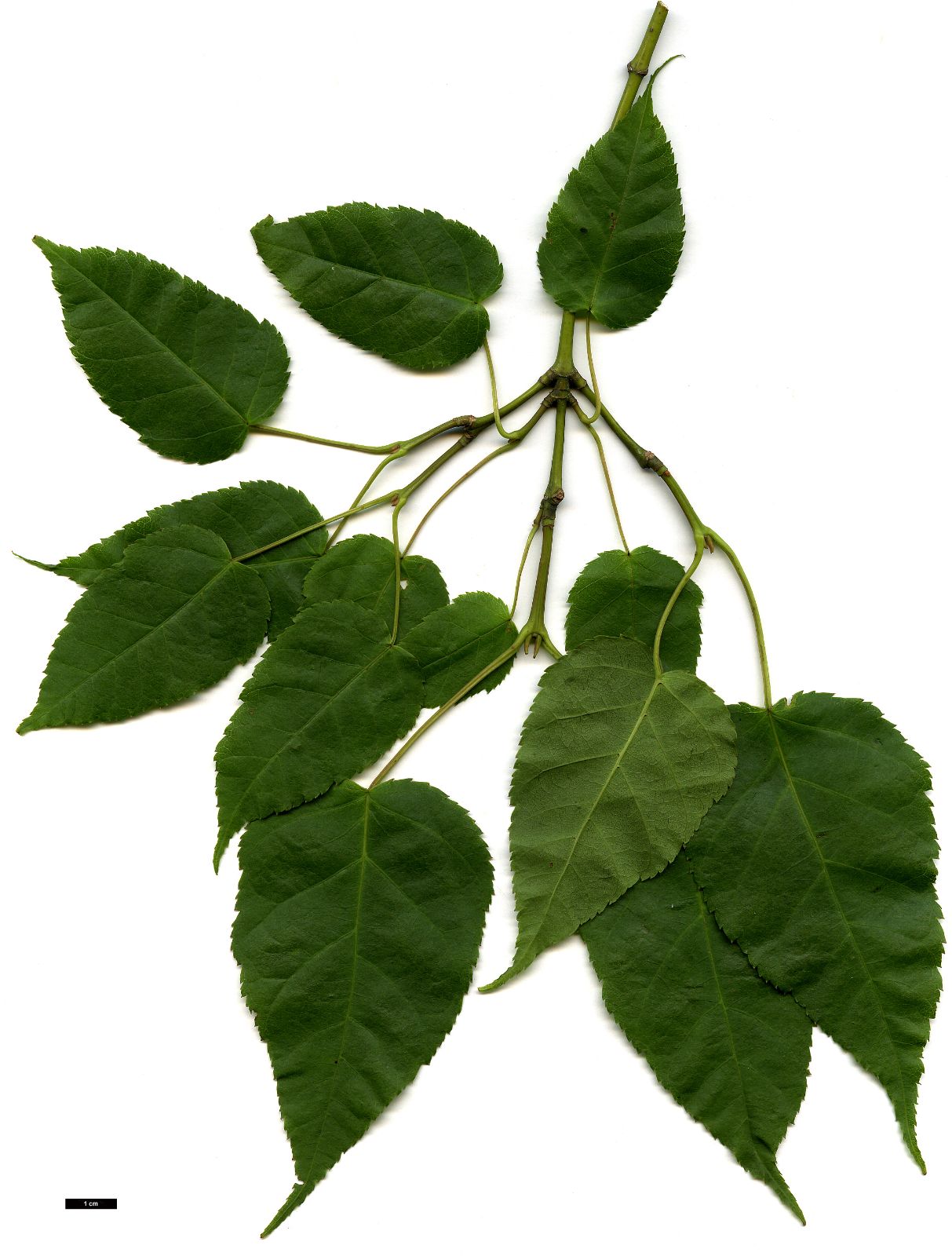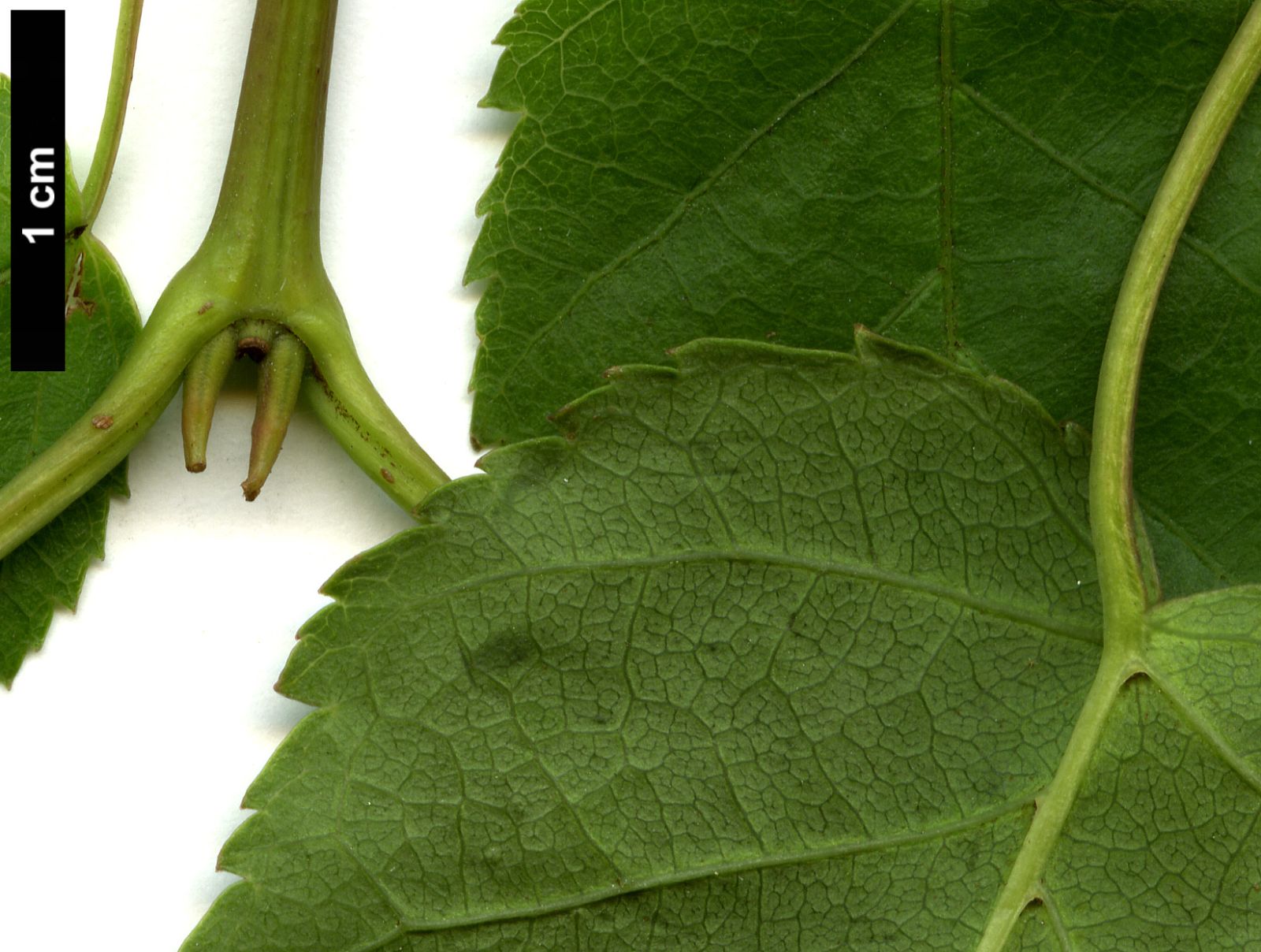Acer kawakamii
Sponsor
Kindly sponsored by
Lawrence Banks
Credits
John Grimshaw, Ross Bayton & Dan Crowley (2022)
Recommended citation
Grimshaw, J., Bayton, R. & Crowley, D. (2022), 'Acer kawakamii' from the website Trees and Shrubs Online (treesandshrubsonline.
Genus
- Acer
- Sect. Macrantha
Common Names
- Kawakami Maple
Synonyms
- Acer caudatifolium Hayata
- Acer morrisonense Hayata non H.L. Li
Other taxa in genus
- Acer acuminatum
- Acer amplum
- Acer argutum
- Acer barbinerve
- Acer buergerianum
- Acer caesium
- Acer calcaratum
- Acer campbellii
- Acer campestre
- Acer 'Candy Stripe'
- Acer capillipes
- Acer cappadocicum
- Acer carpinifolium
- Acer 'Cascade'
- Acer caudatum
- Acer ceriferum
- Acer chapaense
- Acer chienii
- Acer circinatum
- Acer cissifolium
- Acer × conspicuum
- Acer cordatum
- Acer coriaceifolium
- Acer × coriaceum
- Acer crataegifolium
- Acer davidii
- Acer diabolicum
- Acer distylum
- Acer divergens
- Acer duplicatoserratum
- Acer elegantulum
- Acer erianthum
- Acer 'Esk Flamingo'
- Acer fargesii
- Acer fenzelianum
- Acer flabellatum
- Acer forrestii
- Acer franchetii
- Acer × freemanii
- Acer fulvescens
- Acer 'Gimborn'
- Acer ginnala
- Acer glabrum
- Acer 'Gold Coin'
- Acer granatense
- Acer grandidentatum
- Acer griseum
- Acer heldreichii
- Acer henryi
- Acer × hillieri
- Acer hookeri
- Acer hyrcanum
- Acer japonicum
- Acer komarovii
- Acer laevigatum
- Acer laurinum
- Acer laxiflorum
- Acer lobelii
- Acer longipes
- Acer macrophyllum
- Acer mandshuricum
- Acer maximowiczianum
- Acer maximowiczii
- Acer metcalfii
- Acer miaotaiense
- Acer micranthum
- Acer 'Mindavi'
- Acer 'Minorient'
- Acer miyabei
- Acer miyabei × campestre
- Acer monspessulanum
- Acer morifolium
- Acer 'Mozart'
- Acer oblongum
- Acer obtusifolium
- Acer okamotoanum
- Acer oliverianum
- Acer opalus
- Acer orientale
- Acer palmatum
- Acer papilio
- Acer pauciflorum
- Acer pectinatum
- Acer pensylvanicum
- Acer pentaphyllum
- Acer pentapotamicum
- Acer pictum
- Acer pilosum
- Acer pinnatinervium
- Acer platanoides
- Acer platanoides × amplum
- Acer platanoides × truncatum
- Acer × pseudoheldreichii
- Acer pseudoplatanus
- Acer pseudosieboldianum
- Acer pubinerve
- Acer pycnanthum
- Acer rubescens
- Acer rubrum
- Acer rufinerve
- Acer saccharinum
- Acer saccharum
- Acer sempervirens
- Acer 'Serpentine'
- Acer serrulatum
- Acer shenkanense
- Acer sieboldianum
- Acer sikkimense
- Acer 'Silver Cardinal'
- Acer 'Silver Ghost'
- Acer sinense
- Acer sinopurpurascens
- Acer spicatum
- Acer stachyophyllum
- Acer taronense
- Acer tataricum
- Acer tegmentosum
- Acer tenellum
- Acer tetramerum
- Acer tibetense
- Acer tonkinense
- Acer triflorum
- Acer truncatum
- Acer tschonoskii
- Acer turkestanicum
- Acer tutcheri
- Acer ukurunduense
- Acer velutinum
- Acer wardii
- Acer 'White Tigress'
- Acer wilsonii
- Acer × zoeschense
Tree to 12 m, though perhaps as tall as 20 m in the wild; densely branched. Bark smooth, green to reddish green with faint white ‘snakebark’ striping. Branchlets slender, glabrous, light green to reddish green. Leaves deciduous, 6–10 × 2.5–5 cm, unlobed or three-lobed (rarely five-lobed), upper surface dark green and glabrous, lower surface pale green and glabrous, but for the tufts of hair in the vein axils, five to eight lateral veins on each side of the midrib, margins double-serrate, apex long-acuminate; petiole 2.5–7 cm long, yellowish green; autumn colour yellow to russet. Inflorescence lateral, racemose, pendulous, 5–7 cm long with 7–15 flowers, unisexual. Flowers 5-merous, 1 cm diameter; sepals purplish, oblong to obovate, shorter than petals; petals white, rhomboidal, inward-curved; stamens eight, inserted outside the nectar disc. Fruiting raceme with 7–17 pairs of samaras; samaras 1.8–2.5 cm long, wing strongly keeled and veined, spreading obtusely or rarely horizontally, reddish, turning straw-coloured when ripe. Fruiting September (Taiwan). (van Gelderen et al. 1994; van Gelderen & van Gelderen 1999; Xu et al. 2008; Gregory, in prep.).
Distribution Taiwan
Habitat Montane forest between 650 and 2500 m asl.
USDA Hardiness Zone 8-9
RHS Hardiness Rating H3
Conservation status Least concern (LC)
Taxonomic note Acer kawakamii has been widely referred to as A. caudatifolium in recent decades (e.g. van Gelderen et al. (1994), Xu et al. (2008) and Grimshaw & Bayton (2009)) and is commonly found in collections growing under both these names. However, A. kawakamii is the older name and takes priority and is thus used here. The confusion appears to be a result of descriptions of A. kawakamii being published twice in 1911, either the side of the publication of A. caudatifolium, with the first of these publications being overlooked, or A. kawakamii treated as a nomen nudum, when it was in fact validly published. The situation is fully detailed by Goetghebeur & Crowley (2021). Acer insulare Makino is treated as a synonym of this so-called Taiwanese endemic by van Gelderen et al. (1994), but this name actually refers to a Japanese taxon, treated as distinct by Ogata (1999). Further investigation is required to satisfactorily resolve this confusion.
Acer kawakamii forms a small tree that, like so many of the snakebark group, retains green stems almost to the ground. It varies somewhat in habit, some trees being upright and rather twiggy, while others are much laxer. An 8 m tree at Tregrehan has an almost weeping shape. The young leaves, which appear very early in the year, are bronzed on emergence, becoming mid-green during the summer and usually fading yellow in autumn. Autumn coloration can be much more interesting, however, Dan Hinkley noting it as ‘one of the most spectacular [maples] in autumn finery’, with red and orange colours in north-central Taiwan (Heronswood Nursery catalogue 2003). The first introductions to Europe were made by James Harris in 1971 (van Gelderen et al. 1994) but these have been supplemented by later introductions, including ETOT 21, 54, 158 from 1992, distributions from Chollipo Arboretum and private collections (for example, BSWJ 3114, DJHT 99018 and 99057). It is a frequent species in mixed forest in Taiwan, and variation in appearance and hardiness should be expected.
Unfortunately A. kawakamii is rather tender when young, at least in its most familiar form: at Colesbourne Park, Gloucestershire a young plant of 1 m was killed outright by a November frost of –9 ºC in 2005, after two years in the ground. In the United Kingdom it seems to increase in hardiness when established (Flanagan & Kirkham 2005), but in harsher continental climates it is not successful, as a series of casualties at Rogów Arboretum has demonstrated (P. Banaszczak, pers. comm. 2007). In consequence it is rather rare, except in mild maritime climates. There are good specimens at Hergest Croft, one of Chollipo provenance being c. 8 m tall in 2006 and forming a nice straight tree, bearing fruit when seen in October of that year. A certain amount of variation in leaf shape is apparent among the Hergest specimens, but all have the long-pointed leaf that gives the species its name. It is likely to thrive best in mild, moist conditions – no doubt the reason for the success of an 8 m specimen at Mount Congreve, Co. Waterford (Johnson 2007), and it flourishes in the milder parts of the Pacific Northwest, with good specimens at both the Washington Park Arboretum and the David C. Lam Asian Garden. It can be planted as an understorey tree where there is a high canopy. A young tree is growing well at the JC Raulston Arboretum (1.8 m in 2006, from seed sown in 2001), but suffers annual dieback to the long unripened summer growths, even though planted in a sheltered site (T. Alderton, pers. comm. 2007). At the same arboretum, growing with the protection of a lath house, is a plant labelled A. caudatifolium ‘Variegatum’ (almost certainly an illegitimate name). Obtained from Heronswood Nursery in 2000 but ultimately originating from Japan, this has flourished in these conditions, now being over 2 m in height, and tolerating both summer heat and winter cold (T. Lasseigne, T. Alderton, pers. comms. 2007); at Heronswood it also did well, providing structure and colour in the woodland garden (Heronswood Nursery catalogue 2000). The only problem is the identity of the plant, both correspondents suggesting that its leaves seem rather large for A. kawakamii and that it differs in other ways as well.


